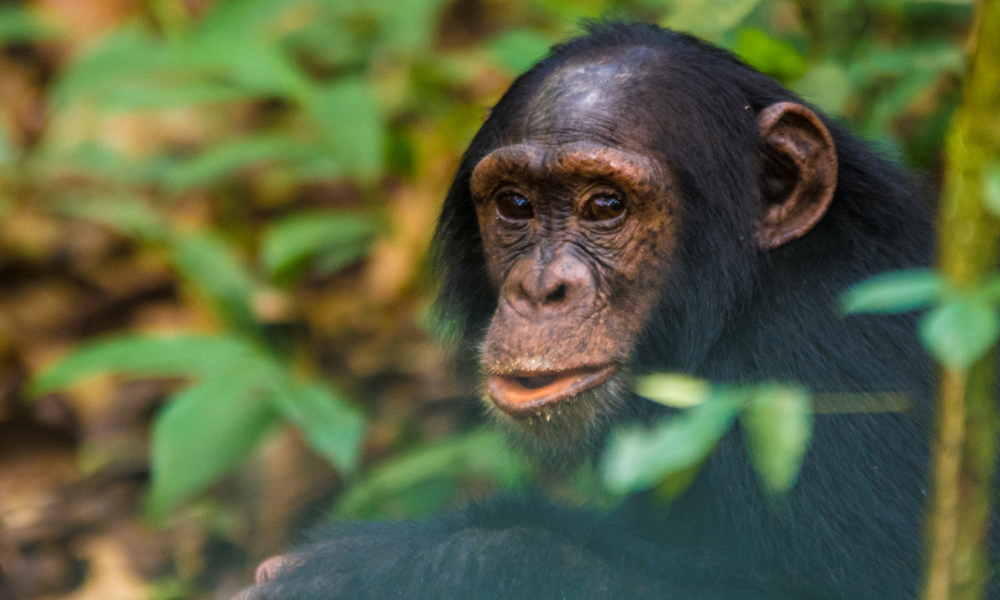Situated in southwest Rwanda, Nyungwe National Park shares borders with Burundi, Lake Kivu, and the Democratic Republic of the Congo on the west. The Nyungwe rainforest, which is well-known for chimpanzee trekking safaris and tours in Central Africa’s mountains, is arguably the best maintained rainforest. It is situated in the watershed that separates the Nile River Basin to the east from the Congo River Basin to the west. One of the branches of the Nile sources also emerges from the east side of the Nyungwe forest. The 970 km² Nyungwe Forest National Park was created in 2004 and is home to grasslands, bogs, bamboo forests, and wetlands.
The closest town is 54 km to the west, in Cyangugu. There is Mount Bigugu inside the park boundaries. In addition, it is home to a sizable chimpanzee population as well as two other endangered monkey species: the golden monkey and the owl-faced monkey, all of which have been observed but not confirmed. Via the forest, there is a vast system of well-kept walking routes that lead to numerous waterfalls and observation spots. Nonetheless, anyone wishing to track chimpanzees in Rwanda should give Nyungwe Forests more time.

Things to do in Nyungwe Forest National Park
Chimpanzee Trekking
There are an estimated 500 chimpanzees in Rwanda, and they are believed to be limited to Nyungwe National Park, which includes a tiny settlement in the Cyamudongo Forest. A group of chimpanzees frequently wanders into Uwinka and the coloured trail during the rainy season; it is up to the visitor to determine whether to pay extra to track them. Before you see them, chimpanzees might be audible to you; from far into the jungle, you might hear their eager hoots, at first from a single voice, then from a group of them, becoming louder until they suddenly cease or fade away.
Chimpanzees, in contrast to most other primates, live in extended communities of up to one hundred people. These subgroups travel about the forest in tiny, movable groups, frequently centred around a few close family members, such as mothers, daughters, and brothers. While female chimps are likely to relocate into a neighbouring group at some point after reaching adolescence, male chimps often live their entire lives within the society in which they were born.
Colobus Monkey Tracking
The thirteen primate species found in Nyungwe account for 20–25% of all African primate species, an astounding percentage that in East Africa is only surpassed by Uganda’s Kibale forest. Moreover, the IUCN red list lists a number of these primates as vulnerable or endangered, and Nyungwe is most likely the primary habitat for at least two of them. The most well-known primate in Nyungwe is the Rwenzori Colobus, a subspecies of the more widely distributed Angola Colobus that is only found in the Albertine Rift. The Rwenzori Colobus is a highly arboreal and acrobatic leaf-eater that can be clearly identified from other primates in Nyungwe by its snow-white tail tip, shoulders, and whiskers, which contrast with its overall black colour.
While all colobus monkeys are extremely amiable, the ones in Nyungwe are particularly special since they usually travel in groups of several hundred. The largest known troop of arboreal primates in Africa and the globe is a semi-habituated troop of 400 species that lives in the forest surrounding the campsite; the only other species that moves in groups of a similar size is the Chinese golden monkey. Four species of small nocturnal monkeys found in Nyungwe are more closely linked to Madagascar’s lemurs than to any other primates found on the continent of Africa. These three species include the sloth-like potto and the bush baby, also known as the galago, a group of tiny, extremely active, wide-eyed insectivores. Tourists are unlikely to see any of them.
Bird Watching
With over 280 bird species reported, mostly forest specialists and 26 regional endemics whose range is limited to a few forests along the Albertine Rift, Nyungwe Forest National Park is one of Rwanda’s most significant locations for bird viewing. Because of the dense vegetation and the tendency of many species to stick to the canopy, bird viewing in Nyungwe can be quite exhausting. Some of Nyungwe’s birds can be appreciated without being an avid birdwatcher. The great blue turaco, a chicken-sized bird with vivid blue, green, and yellow feathers that is frequently spotted gliding between the trees along the main road, usually makes people double take.
Along with the tailed blue, orange, and occasionally white bird that is frequently spotted near the rest house, the paradise flycatcher is another true jewel. Other birds, like the enormous forest hornbills, which have a weird appearance and vocalisations that are almost as funny as their awkward bills and heavy winged flight, leave an impression. Additionally, keep an eye out for the red-throated alethe, a very specialised bird with a characteristic blue-white eyebrow, when tracking through the undergrowth.
